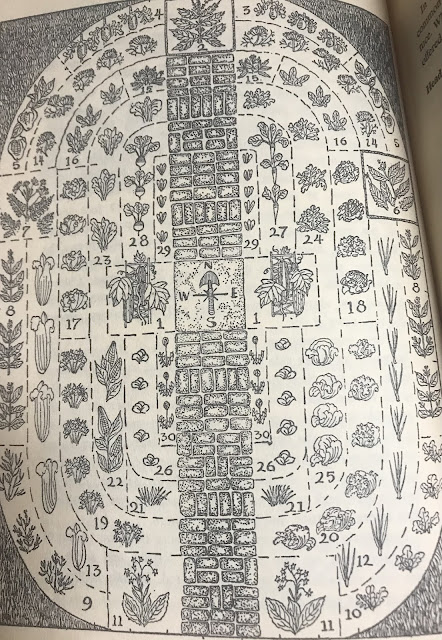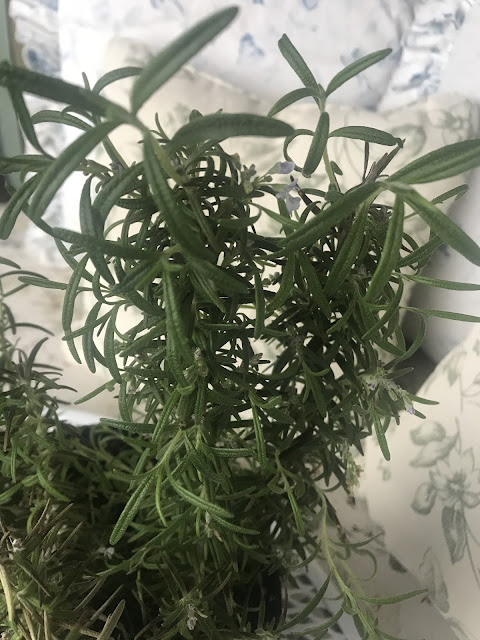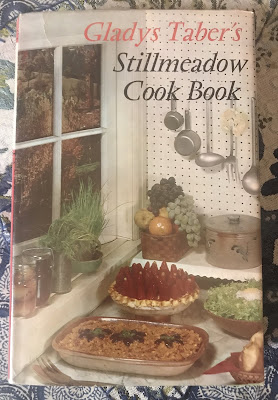"A Fresh Herb Platter" For Spring
A Fresh Herb Platter just seems like the perfect cookbook to share this week as May Day is this weekend and I've been lovingly planting and tending my herb and vegetable seeds over the past few weeks. Winter has been playing a teasing game in this transitional time but I think at last Spring is here to stay. It's been raining gently this week but the sun has now come out but there is a moist softness to the air.
Growing up with my Mom, affectionately called Bean and later Grandma Bean by her grandchildren, we always had a garden. The exception was when we lived in the Sierra's and the growing season was incredibly short though she would never concede defeat. Pots of fresh herbs were at hand and the odd tomato plant that stood rather forlorn yet green on the deck but the fruit never ripened. She tried countless methods and the one time she had some hint of color a bear ate it! She was a farm girl at heart though and she kept trying. This blog Beans Cookbook Legacy shares her love of all things cookery and her vast cookbook collection that I am the keeper of now. I also choose one recipe from the chosen book to try. Her legacy more than anything else was love and an insatiable need to feed people.
Photo from the book jacket of the Hogner’s.Written by Dorothy Childs Hogner and illustrated by her husband Nils Hogner, this charming book is really both a gardening guide and a cookbook. Dorothy was an author of many books covering everything from travel, historical novels, cookery, gardening and books for teens. Nils was a noted illustrator and artist. Together they also owned Hemlock Hill Herb Farm in Litchfield, CT and specialized in raising culinary herbs. They obviously were passionate and knowledgable about herbs and vegetables as the book includes three detailed garden plans, container herb gardening ideas, plant purchasing and planting recommendations, pest control and a good variety of recipes. This book was published in1961 by Doubleday & Company, Inc. Garden City, NY.
I attempted to discover more about the author Dorothy Childs Hogner but could find virtually no information on the internet save for a listing of her books. There was little information on the back book cover save to say she studied at Wellesley, the University of New Mexico and the New York School of Fine & Applied Arts and had lived much of her life in Connecticut. There is plenty of information about her husband Nils as an illustrator but you'd think a woman who wrote a minimum of 23 books would warrant at least a mention on Wikipedia! Typical...
Dorothy Hogner invites you into her natural world with an air of hospitality and the desire to share her passion. The farm was obviously a landscape she knew and loved intimately from the peeper frogs with their shrill voices to "Mr. Robin perched on the top of the tallest Hemlock tree'. She tells of a particularly devastating winter where they lost many of their perennial herbs and were sick with loss. But gardeners are ever hopeful and built of sturdy stuff so even in the face of disaster their true spirit took over and they created the three garden designs that she shares in this book. The first is "The Whirling Square" a 25' x 25' garden space with a brick path. From a circle of mint in the center, contained within a brick border, an ever widening semi circle of shallots, carrots, tarragon and finally Swiss chard ray outward. As she states, "we have revolted against planting vegetables in monotonous straight lines; we have laid out the rows to please the eye." The garden moves outward with a mixture of flowers, vegetables and herbs supplying the kitchen and house with everything from kohlrabi to pineapple sage to okra and lilies. She goes on to make suggestions of the varieties to grow from seed or to buy starter plants.
The second garden design is called The Salad Bowl, and obviously contains many varieties of lettuces, herbs, cucumbers, tomatoes and peppers, radishes, and cabbages. Measuring 18' long and 13' wide the garden has a brick path running down the center. Again the garden is planted in semi circles radiating outward from the pathway. The final garden to be included is a small "Salad Bowl Annex" which holds a further eight perennial sweet herbs that she considers a must; sweet marjoram, rosemary, thyme, lovage, winter savory, sage, pineapple sage, and hyssop. along with some extras- perennial sorrel, biennial chervil, annual coriander, and also shallots.
Recipe sections of this cook book include herbal vinegars and salad dressings; salads; pickles; vegetables; braising, broiling, roasting and stewing of meats and poultry; Fish; Shellfish (Including snails-something you don't see in most cookbooks!); "Beginning and end of meal"- canapes, soups, desserts; "Before Winter Comes" which includes "Harvest" and "Putting Garden to Bed." In this final chapter she shares her thoughts on freezing and canning food, harvesting shallots, and what to do with herbs after a frost and which to take in such as rosemary. She has many helpful suggestions.
Rather pressed for time this month I chose a simple recipe to try as it rather intrigued me. A little different variation on a baked potato...
Potatoes Baked
6 baking potatoes 1 teaspoon finely chopped basil or lovage leaves (I used fresh dill, and more than a teaspoon) experiment salt and pepper butter
Using an apple corer, core halfway through each potato. Remove the core and set aside. Blend herbs, salt and pepper with butter (she does not note quantity of butter nor if you core lengthwise or from the top). Spoon butter into holes, replace cores and bake until potatoes are fork tender. Approximately one hour seems about right for a large baking potato. I actually had a very large potato so I cored from both ends.
A wonderful finale to the book is a recipe for Glog- (I know it well, Bean made a mean Glog!) Obviously with her husband being of Scandinavian descent and the wonderfully spiced hot drink being perfect after a chilly autumn day spent in the garden what better ending for a lovely book?
Rosemary for remembrance...I brought mine in this winter and it survived!














Comments
Post a Comment